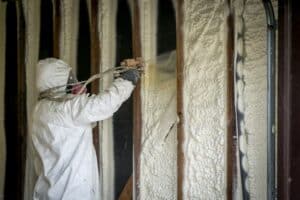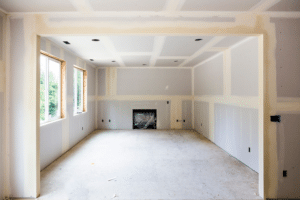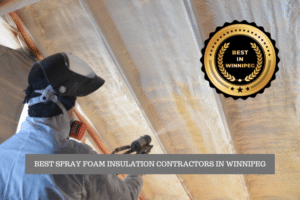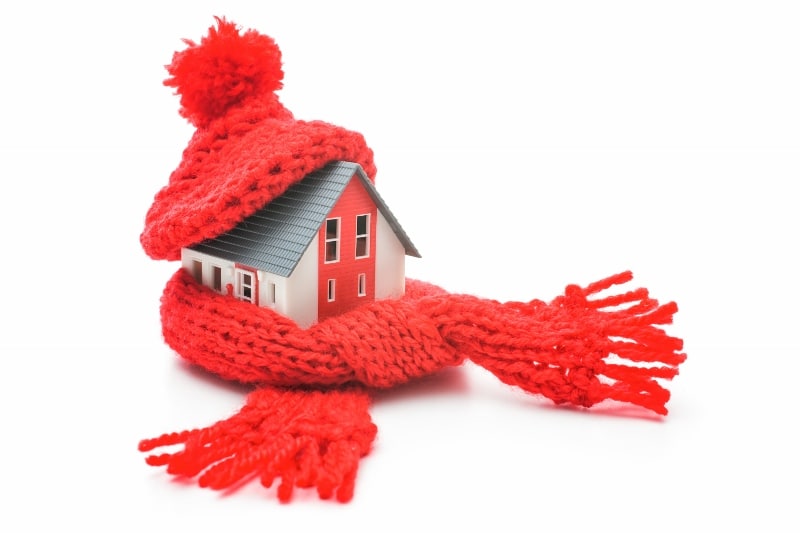
Whether choosing new insulation for your new home or upgrading an old home, there are many types to choose from. Insulation is installed to help improve thermal performance and slow energy from transferring in or out of a home. By doing so, it can help save upwards of 15% on heating and cooling costs and an average of 11% on yearly energy costs, according to ENERGY STAR. Attics and basements are the biggest culprits of heat loss, making high performing insulation especially important.
Picking the right home insulation comes down to a few factors beyond just cost or ease of installation. Factors such as where you need insulation, how much additional R-value is required, and the type all play a role in the final decision. A skilled contractor can help with the process, but knowing yourself is valuable when making an informed choice. To learn more about the different types of insulation, how they work, and their benefits, read on through this handy guide.
Table of Contents
ToggleThings you should know about insulation
Before getting into the specifics of insulation, it’s necessary to understand the terms often used when discussing insulation and how it works. That way, when looking at the different types and choosing the best insulation for your home, you’ll be better informed of what you are getting.
R-value
The thermal resistance, or R-value as it’s more commonly called, refers to the insulation’s resistance to heat flow. Insulation with higher ratings offers better insulating properties. The R-value is also affected by the type of insulation, the thickness level, and density. Any moisture exposure or the age of the insulation, can also change or have negative effects on the R-value. Loose-fill insulation tends to compress as it ages, and so will decrease in its R-value over the years. Since heat travels through studs and joists, the R-value for walls will vary compared to ceilings or attics. Since the R-value can vary so widely and differs across Canada, it’s best to talk to a contractor for an accurate estimate for your home insulation.
How it works
Most insulation types work the same way by slowing the flow of energy through the material. Typically, insulation slows conductive heat, which is heat that passes through an object. It can also slow convective heat, which is heat that moves in liquids and gasses, but to a lesser degree. In the summer, insulation helps prevent heat from outdoors from reaching the interior of your home. In the winter, the opposite happens where it prevents interior heat from escaping to the outdoors. That plays a role in keeping your monthly bills down, and extending your HVAC system’s lifespan.
Radiant insulation barriers are a different type of insulation and they work differently. Radiant heat travels in a straight line and heats anything that is solid and in its path. The shiny barriers help limit how much radiant heat is gained by reflecting the heat away before it can be absorbed. The most effective use is to have free air space surrounding the barrier so that the heat can be reflected.
Factors affecting R-value
Like many energy-efficient additions, some factors can affect the efficiency and overall savings. Insulation, as a major source of energy savings, is no exception. Things such as who installs the insulation and how well, to the type and where it works best, will all affect the insulation’s overall efficiency.
Installation
As mentioned before, different areas of the home affect the R-value needed to insulate that area properly. Attics, for example, benefit more from insulation types that can seal any gaps and nooks to maximize its efficiency. Either spray foam or loose-fill insulation are popular attic choices for their sealing abilities.
Installation is also dependent on the skill of the installer and any required strategies. While some insulation can be DIYed, it is generally better to leave higher quality and more complicated insulation to a skilled and experienced professional. They’ll already own any specialized tools, know the local building code requirements, and take care to prevent compression while installing certain types of insulation.
Type
Different insulation types offer different benefits, protection, and savings that all affect the insulation’s performance. Low-quality loose-fill insulation, for example, will compress over the years as it settles. As it does, the R-value is slowly lost as heating and cooling gain and loss increases. In comparison, spray foam insulation dries into a hard barrier that benefits homes with its absolute seal. However, that also means the home needs proper ventilation to allow the right airflow and exchange throughout the home. Otherwise, condensation, stale air, and resulting mould can become serious issues.
Types of Insulation
There are many types of insulation that range from soft materials to bulky and rigid. Each has a different means of installation and protection methods. Like bulky insulation, some are better at resisting conductive heat gain. Others, like rigid foam boards, are better at limiting convective heat gain. The list below will outline the different insulations, their R-values, and the benefits and uses of each type.
Blanket: batts and rolls
This is one of the flexible insulation options and is made from fibreglass and rock wool. It is used for insulating between wall studs, attic rafters, and floor joints. Each batt is cut to a standard size for these areas, making it an easy and inexpensive DIY project. As a roll, it must be cut to shape before it can be used. For extra safety as well, always wear protective gloves and eyewear. Fibreglass itself is both a lung and skin irritant, so never handle it without protection.
R-value: Standard fibreglass is between R-2.9 and R-3.8 per inch of thickness. High-performance goes up to R-3.7 and R-4.3 per inch of thickness.
Installation method: between studs, joists, and rafters. It is DIY friendly.
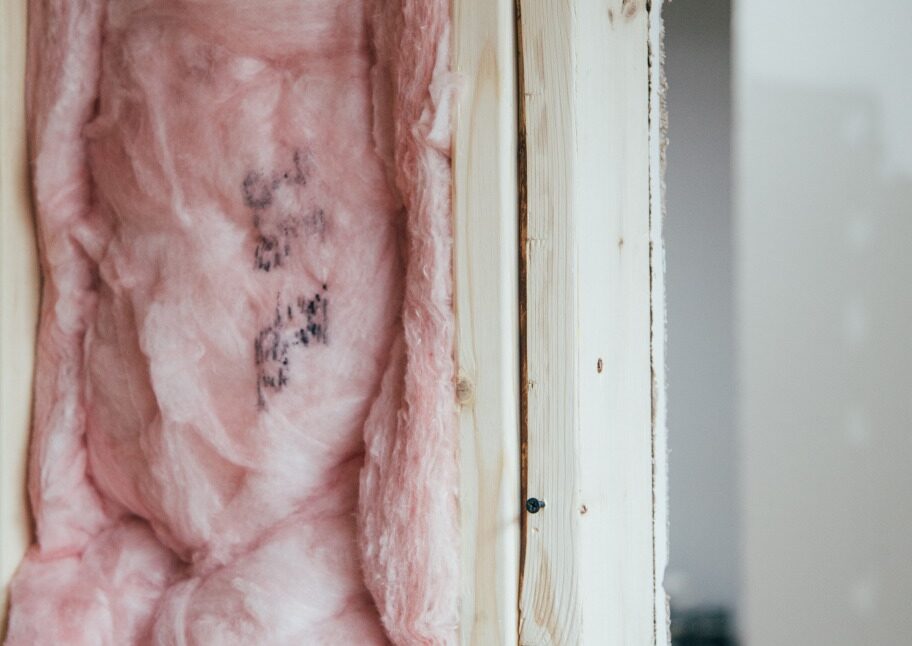
Foam board or rigid foam board
This type is more expensive than blanket insulation, but it is better suited for exterior and interior wall sheathing. Since it can limit how much heat conduction passes through wood, it’s also ideal for basements, foundation walls, and unfinished floors. It provides a high R-value, despite not being excessively thick. It is typically made of polyurethane, polystyrene, or polyisocyanurate, which are all types of strong foam materials.
R-value: R-4 and R-6.5 per inch of thickness.
Installation method: unfinished walls, floors, basements. It is DIY friendly.
Loose-fill or blown-in
Similar to blanket insulation, loose-fill is made of fibreglass, rock wool, or cellulose materials. As its name suggests, it is blown into spaces using a specialized machine that releases the home insulation in a loose spray. That means the insulation can easily reach and fill any location, including irregular shapes or hard to reach nooks. It is typically used in finished homes, such as behind walls and attic floors. The installation process can be DIYed if you rent a blower machine. Still, it’s best to hire a professional and avoid compressing the insulation.
R-value: Depends on the material. Fibreglass has an R-2.2, while dense cellulose has an R-3.8 value per inch of thickness.
Installation method: attic floors, behind finished walls. It is DIY friendly with rented equipment, but hiring a professional is still best.

Spray foam
This type of insulation is becoming a popular choice for its superior benefits and high R-value. Spray foam or foam-in-place is applied with a spray gun that releases the insulation as a foam. The insulation rapidly expands as it is applied, filling any small nooks and crannies before it dries into a hard barrier. It is available as either closed-cell or open-cell, with each offering different benefits and uses.
Closed-cell is the more effective of the two and is highly dense, so when it seals and dries, there are no gaps in the insulation. It is also able to resist moisture and air leaks better. Open-cell is less dense and has air between the foam cells. It’s best to talk to a professional for advice on which type of spray foam insulation to use, as the costs and conditions will vary.
R-value: Open-cell has an R-3.7, while closed-cell has an R-6.7 value per inch of thickness.
Installation method: existing walls and attic floors. Hire a professional to install as special equipment and safety measures must be followed. Homes must also be vacated during spray foam installation as it releases off-gassing during the process, which can be harmful if inhaled.
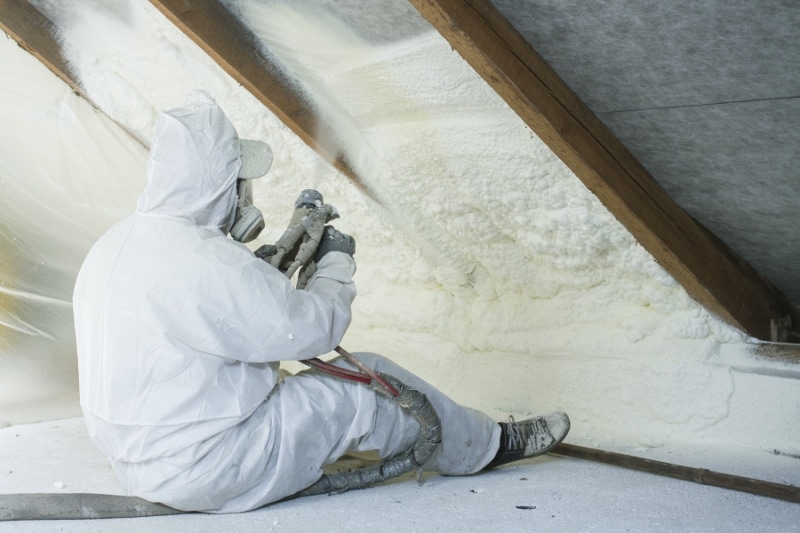
Structural insulated panels (SIPs)
This best insulation is used for both residential homes and light construction and offers a much higher performance rating. Each panel is made of a strong foam core with oriented strand boards (OSB) on either side. OSB boards are made of wood strands and adhesive that are bound by compressing the layers. SIPs are made to fit any building design and are typically used in new builds to form walls and roofing. They also take less time to build, which saves on labour costs, and offer superior insulating values.
R-value: Expanded polystyrene insulated panels have an R-4 to R-5 per inch of thickness. Polyurethane or polyisocyanurate insulated panels have an R-6 to R-7 per inch of thickness.
Installation method: internal and external walls, floors, and roofing. Hire a professional to install.
Rigid fibre foam board
Rigid fibre foam board is made of either fibreglass or wool material and can stand up to high temperatures without losing efficiency. It is used to insulate both interior and exterior air ducts. Air ducts that were installed poorly or never insulated can be a source of heat and cooling loss and add unnecessary strain on your furnace. Insulating the ducts helps prevent that loss, boosts energy savings and extends the lifespan of your furnace. Because the installation process is more involved, it’s best left to a professional to handle. The insulation also varies in thickness, from 1 inch to 2.5 inches, so that you can get the right size for your home.
R-value: R-1 for ¼-inch thickness, to R-15 for 3-inch thickness.
Installation method: interior and exterior air ducts. Hire a professional to install.
Reflective or radiant barrier
Unlike traditional types of insulation, this type works differently. Reflective or radiant barriers work by reflecting heat away and so prevent heat gain. The barrier is often paired with a different type of insulation and is installed like a wrap over the top. Using radiant barriers in attic insulation is one of the most effective means as there is both open air space to reflect the heat, and it’s the most significant location for heat gain and loss. While you can DIY the installation, it’s better to hire a professional to ensure maximum savings and benefits.
R-value: Not measured with R-value as it reflects heat instead of absorbing.
Installation method: unfinished walls, ceilings, attics, and floors. It is DIY friendly, but hiring a professional is still the best.
When should you replace or update insulation?
Home insulation ranges in lifespan depending on the type, climate, and if it has been damaged or not. The best way to ensure your insulation is always at top performance is to have a professional do an inspection of your insulation. Likewise, doing a home energy audit is another way to tell if your insulation is starting to fail and needs to be replaced.
What to look for in a contractor
For insulation that needs a qualified professional to install, you want to pick the right contractor. Before you settle on one contractor, get a few estimates for costs and R-values from various other companies. That way, you can ensure you get the right match and at the right price. Also, look for experience and knowledge about different insulation types and the needs of the house. Upgrading ventilation and sealing air leaks throughout the home are also recommended and important steps.
Be sure to look at reviews from previous customers and see how the contractor handled the job or any extra steps and the care they took. Then, ask lots of questions about the process, installation method, and for references or to see any certifications. You want the best insulation choice for your home, so take the time and care to find that match properly.




